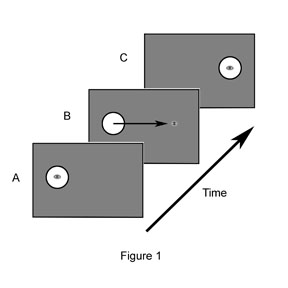Matching Image Update Rates in Gaze-Contingent Multi-Resolutional Displays to the Temporal Limits of Vision

A key question for the designers of gaze-contingent multi-resolutional displays is: how fast do you need to update the high resolution center each time the viewer moves their eyes? If the updating is too slow, it may cause perceptual difficulties.
We have conducted several studies regarding this issue, attempting to identify deadlines for image updating that do not interfere with perception. An initial study (McConkie & Loschky, 2002) determined the earliest point in an eye fixation when image blur becomes detectable, which is 6 milliseconds after the eye has stopped moving. However, a 6 ms update delay deadline is overly conservative for use in gaze-contingent multi-resolutional displays. Two follow-up studies (Loschky, in preparation; Loschky & Wolverton, 2007) have found that longer delays can be used without causing perception and performance difficulties. Loschky and Wolverton have shown that delays of up to 60 ms do not increase the detectability of just-noticeable blur. Another study with more detectable blur (Loschky, in preparation) found that a 45 ms delay slightly increased eye fixation durations, but did not increase search times for targets in natural scenes. These studies provide critical information for the designers of gaze-contingent multi-resolutional displays and their applications.
Related Publications
Related Conference Presentations
Loschky, L.C., & McConkie, G.W. (2005, September). How late can you update? Detecting blur and transients in gaze-contingent multi-resolutional displays. Talk presented at the Human Factors and Ergonomics Society 49th Annual Meeting, Orlando, FL.